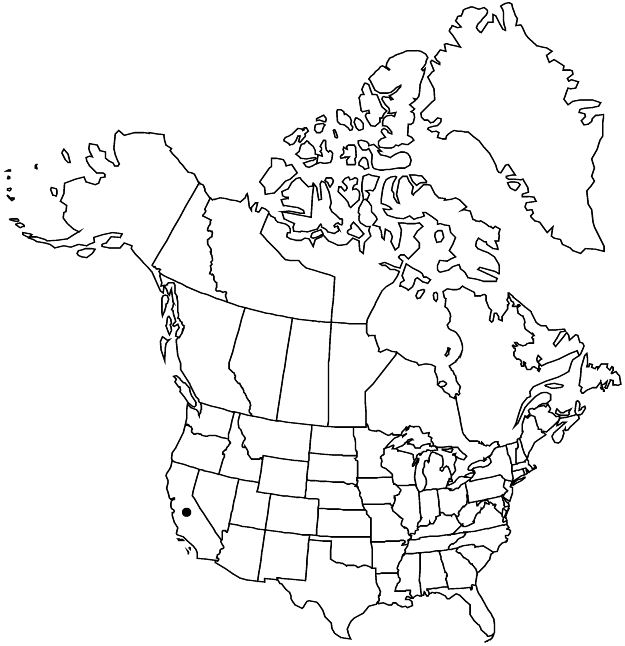Difference between revisions of "Ivesia patellifera"
Syst. Bot. 14: 232. 1989.
FNA>Volume Importer |
FNA>Volume Importer |
(No difference)
| |
Revision as of 20:36, 24 September 2019
Plants green, ± tufted, often forming hanging clumps, sometimes rosetted. Stems pendent or prostrate to ascending, (0.5–)1–2 dm. Basal leaves planar, (2–)5–15 cm; sheathing base not strigose abaxially; petiole 1–5 cm; lateral leaflets (1–)2–3(–4) per side, separate, obovate to orbiculate, 5–20 mm, incised 1/4–1/2 to base into 5–9 broadly ovate teeth, apex not setose, surfaces short-pilose, ± glandular; terminal leaflets distinct. Cauline leaves (0–)2; blade well developed. Inflorescences (1–)3–20(–35)-flowered, open, (0.5–)1.5–4(–6) cm diam. Pedicels 5–20(–30) mm. Flowers 7–10 cm diam.; epicalyx bractlets 0; hypanthium patelliform, 0.5(–1) × 2–3 mm; sepals 2–4 mm, broadly acute; petals yellow, narrowly oblanceolate, 2–3 mm; stamens 5–10, filaments 0.6–1.2(–1.5) mm, anthers yellow, oblong, 0.8–1 mm; carpels 4–10, styles 1.5–2 mm. Achenes greenish white to light tan, 1.5–2 mm, faintly rugose, ± carunculate.
Phenology: Flowering summer.
Habitat: Dry, rocky outcrops of limestone, usually crevices of more or less vertical protected cliffs or boulders, in conifer woodlands
Elevation: 1400–2200 m
Discussion
Of conservation concern.
Ivesia patellifera is confined to crevices in steep wash and canyon walls in the Kingston Mountains of San Bernardino County.
Selected References
None.
